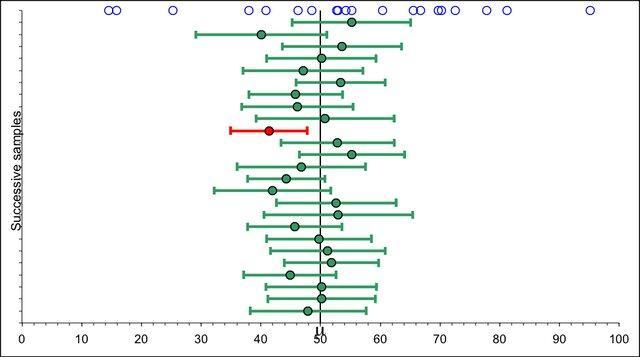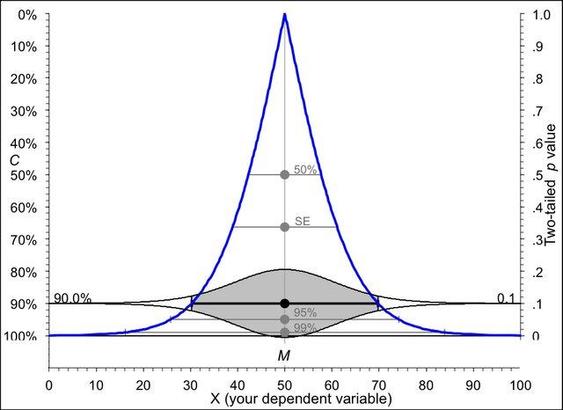#statstab #421 Sample Size Planning for Statistical Power and Accuracy in Parameter Estimation
Thoughts: AIPE is based on controlling the width of the CI.
Sample size can be computed independent of effect size!
#samplesize #confidenceintervals #AIPE #power #poweranalysis #precision #accuracy #research #design
https://www.annualreviews.org/content/journals/10.1146/annurev.psych.59.103006.093735
Sample Size Planning for Statistical Power and Accuracy in Parameter Estimation | Annual Reviews
This review examines recent advances in sample size planning, not only from the perspective of an individual researcher, but also with regard to the goal of developing cumulative knowledge. Psychologists have traditionally thought of sample size planning in terms of power analysis. Although we review recent advances in power analysis, our main focus is the desirability of achieving accurate parameter estimates, either instead of or in addition to obtaining sufficient power. Accuracy in parameter estimation (AIPE) has taken on increasing importance in light of recent emphasis on effect size estimation and formation of confidence intervals. The review provides an overview of the logic behind sample size planning for AIPE and summarizes recent advances in implementing this approach in designs commonly used in psychological research.
Statistics: Concepts and Controversies (10th Edition) – eBook
Overview: Why This Book Matters
Statistics: Concepts and Controversies (10th Edition) — widely abbreviated as SCC 10e — is more than just a statistics text
https://cstbooks.com/uncategorized/statistics-concepts-and-controversies-10th-edition-ebook/
#Inspirations #Uncategorized #ConfidenceIntervals #DataLiteracy #DavidSMoore #HypothesisTesting #SCC10e #StatisticalReasoning #StatisticsConcepts #WHFreeman #WilliamINotz
#statstab #357 Uncertainty Estimation with Conformal Prediction
Thoughts: Haven't parsed this properly but maybe be an interesting discussion point. How best to quantify uncertainty?
#conformalprediction #bayesian #confidenceintervals #uncertainty
#statstab #337 Confidence intervals and tests are two sides of the same research question
Thoughts: Comment describing the connection between NHST p-values/test and Confidence Intervals (CI).
#NHST #ConfidenceIntervals #pvalues #frequentist #estimation
#statstab #315 What fraction of repeat experiments will have an effect size within the 95% confidence interval of the first experiment?
Thoughts: CV is a great place to learn. We see the same answer as Cumming: 83%
#replicability #confidenceintervals #replication #metascience #estimation #research #science
What fraction of repeat experiments will have an effect size within the 95% confidence interval of the first experiment?
Let's stick to an ideal situation with random sampling, Gaussian populations, equal variances, no P-hacking, etc. Step 1. You run an experiment say comparing two sample means, and compute a 95%
#statstab #312 {presize} pkg: Understanding Precision-Based Sample Size Calculations
Thoughts: Do you care about effect sizes? Then precision-based planning is for you. Expect higher Ns!
#r #samplesize #precision #estimation #power #Confidenceintervals
https://library.virginia.edu/data/articles/understanding-precision-based-sample-size-calculations
#statstab #295 The Fallacy of the Null-Hypothesis Significance Test
Thoughts: "the [..] aim of a scientific experiment is not to precipitate decisions, but to make an appropriate adjustment in the degree to which one accepts, or believes, the hypothesis"
#NHST #Bayes #ConfidenceIntervals #pvalues #significance #testing #hypotheses #likelihood #critique #fallacy
#statstab #268 Understanding Confidence Intervals With Visual Representations
Thoughts: A decent overview of CIs and how they can aid inference. Also a shoutout to the {esci} website. Great tools for teaching.



